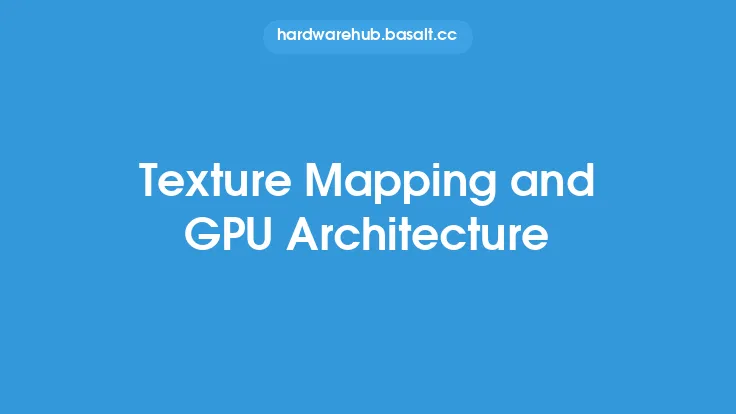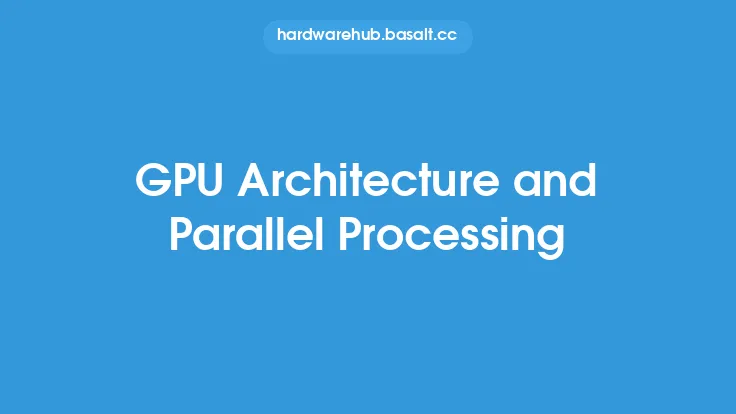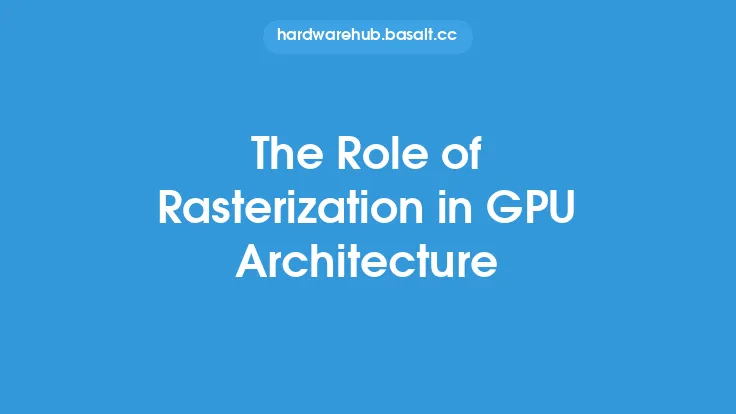The architecture of modern Graphics Processing Units (GPUs) is a complex and multifaceted field, with various components working together to enable the high-performance graphics and compute capabilities that we have come to expect from these devices. Two of the most critical components of GPU architecture are memory and bandwidth, which play a crucial role in determining the overall performance and efficiency of the GPU. In this article, we will delve into the details of memory and bandwidth in GPU architecture, exploring the different types of memory, how they are organized, and the various techniques used to optimize bandwidth.
Memory Hierarchy
The memory hierarchy of a GPU is a layered structure, with each layer having a different access time, capacity, and purpose. The hierarchy typically consists of several levels, including register files, shared memory, L1 and L2 caches, and video random access memory (VRAM). Register files are small, on-chip memories that store data temporarily while it is being processed by the GPU cores. Shared memory is a small, on-chip memory that is shared among multiple threads, allowing for fast communication and data exchange between them. The L1 and L2 caches are small, fast memories that store frequently accessed data, reducing the time it takes to access the slower VRAM. VRAM, on the other hand, is the largest and slowest memory in the hierarchy, storing the majority of the data used by the GPU.
Memory Types
There are several types of memory used in GPU architecture, each with its own strengths and weaknesses. VRAM, also known as graphics double data rate (GDDR) memory, is the most common type of memory used in GPUs. It is a type of dynamic random-access memory (DRAM) that is optimized for high-bandwidth and low-latency access. Other types of memory used in GPUs include high-bandwidth memory (HBM), which is a type of stacked DRAM that offers even higher bandwidth and lower power consumption than GDDR memory. Hybrid memory cube (HMC) is another type of memory that is used in some high-end GPUs, offering even higher bandwidth and lower latency than HBM.
Bandwidth Optimization
Bandwidth optimization is critical in GPU architecture, as it directly affects the performance and efficiency of the GPU. There are several techniques used to optimize bandwidth, including data compression, data caching, and data prefetching. Data compression reduces the amount of data that needs to be transferred, resulting in lower bandwidth requirements. Data caching stores frequently accessed data in faster memories, reducing the time it takes to access the slower VRAM. Data prefetching predicts which data will be needed in the future and transfers it to faster memories before it is actually needed, reducing the time it takes to access the data.
Memory Access Patterns
Memory access patterns play a crucial role in determining the performance and efficiency of the GPU. There are several types of memory access patterns, including sequential, random, and strided access. Sequential access occurs when the GPU accesses data in a sequential manner, which is the most efficient type of access. Random access occurs when the GPU accesses data in a random manner, which can result in lower performance due to the increased time it takes to access the data. Strided access occurs when the GPU accesses data in a strided manner, which can result in lower performance due to the increased time it takes to access the data.
Memory Interconnects
Memory interconnects play a critical role in GPU architecture, enabling the transfer of data between different components of the GPU. There are several types of memory interconnects, including buses, crossbars, and networks. Buses are the simplest type of interconnect, consisting of a shared communication channel that allows multiple components to communicate with each other. Crossbars are more complex interconnects that allow multiple components to communicate with each other simultaneously, resulting in higher bandwidth and lower latency. Networks are the most complex type of interconnect, consisting of multiple crossbars and buffers that enable the transfer of data between different components of the GPU.
Conclusion
In conclusion, memory and bandwidth are critical components of GPU architecture, playing a crucial role in determining the overall performance and efficiency of the GPU. The memory hierarchy, memory types, bandwidth optimization techniques, memory access patterns, and memory interconnects all work together to enable the high-performance graphics and compute capabilities that we have come to expect from modern GPUs. By understanding the intricacies of memory and bandwidth in GPU architecture, we can better appreciate the complexity and sophistication of these devices, and gain insight into the challenges and opportunities that lie ahead in the field of GPU design and development.





